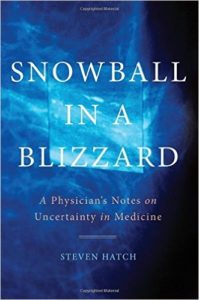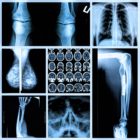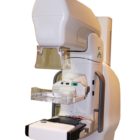 Why I Love This Book — but can’t recommend it to my women friends.
Why I Love This Book — but can’t recommend it to my women friends.
I would like to know where Dr. Steven Hatch hangs out so that I could go there and kiss the ground he walks on.
Dr. Hatch is the author of Snowball in a Blizzard (Basic Books), a book which addresses the problem of “uncertainty” and “haziness” in medicine. He writes that despite the great advances in science and technology, and even with access to the most complex diagnostic tools, medicine can still be a bit hit-and–miss because “a diagnosis is, much more often than not, a conjecture, and a prognosis is typically less certain than that.”
Mammograms: An Annual Ritual
Specifically, in the chapter that lends its title to the book, he addresses the issue of the predictive value of mammograms when used as screening tools on healthy women where there is no evidence of disease. For millions of women in the U.S., the screening mammogram is an annual ritual, and one that Obamacare mandates be 100% covered by health insurers.
But Not For Me
I have never had a mammogram, and never intend to have one, absent any symptoms. Since at the time when I turned 40, American women were being encouraged to start annual mammograms at that very age, I have, in fact, evaded the use of this particular, reportedly unpleasant- and –sometimes- painful screening procedure for 25 years. This, mind you, in the face of raised eyebrows, disbelief, mockery, entreaties from friends, strong recommendations from various members of the medical profession — and even an email from Medicare, signing off as my “partner in health” and reminding me that I had not taken advantage of certain screenings to which I was entitled including a mammogram!
Dicey Diagnostic Tool
Now along comes Dr. Hatch to validate my position. Not by confusing me with facts, and figures and statistics about error or accuracy rates (of which to be sure there is some mention in the book), but by explaining exactly why screening mammograms are such a dicey diagnostic tool.
The title, Snowball in a Blizzard, conveys his main thesis. It is, in fact, a phrase used as dark humor by radiologists commenting on the difficulty of detecting tumors and cancerous cell clusters in human breast tissue. Lest anyone thinks, however, that this observation is leading to a lament that mammograms’ predictive value is questionable because the technology misses cancerous tumors be warned: On the contrary, Dr. Hatch views screening mammography as a tool that tends rather to lead to overdiagnosis (finding possibility of disease where none exists, aka false-positives) and therefore to the risk of harmful overtreatment.
Foggy Lenses

“[S] eparating cancer from non-cancer is not quite as easy a task as it is commonly understood,” writes Dr. Hatch. For one thing, mammograms are “rather slightly foggy lenses that look out upon the world.” It is not like looking at an x-ray and finding a fracture in bone which is more dense than skin and muscle and so appears lighter on the image. A tumor is human tissue, albeit with cells acting peculiarly, but nevertheless surrounded by other healthy tissue. “[I]nterpretation can be highly dependent upon whose eyes are doing the reading.”
In other words, when a radiologist reads a mammogram image there is no ding-ding-ding sound nor any pop-up on the screen to alert him that he is looking at cancerous tissue. Mammography is not a black/white technology, but literally a gray one, writes Dr. Hatch. Factors which might influence a radiologist’s false-positive rate include where he/she was trained; how he/she has been in practice and whether he/she has been sued.
If there is tissue that looks questionable to the radiologist, “[t]here is no way to discern whether a woman’s mammogram is a false positive or a true positive. All that she will know is that radiologic evidence indicates there is something that looks suspicious for cancer, and she will be referred for a biopsy.” Dr. Hatch cites medical studies that show that out of every ten women under the age of 50 who are sent for these biopsies about 8 will have no cancer at all – “a staggering number that speaks to a large group of women who will wait around days or weeks for the biopsy to be performed worried sick that they might die” — until they are told that all is well, and no abnormality exists.
Big Business
Initially, my refusal to take advantage of this screening procedure was driven by an abhorrence of all things medical (which seriously extends to not watching medical shows or dramas – even when George Clooney had a major role on E.R. ). However, there is also my deep skepticism of the American medical profession. With the best will in the world, it is impossible to ignore the fact that the health system here is Big Business. Bottom line: The more tests doctors order and administer, the more they get paid. Lisa V. Davis, Chair of the Black is Back Healthcare Working Group puts it this way : “…breast cancer and mammography is a multi-billion dollar industry… [P]rescribed guidelines for breast cancer screening result in billions of dollars of profit for the mammogram industry… [which] consists of corporations such as Dupont, General Electric (one of the largest manufacturers of mammogram machines in the world), Kodak Eastman and various radiology organizations that either perform the mammograms, or make the supplies.”
There is also the C(over) Y(our) A(ss) aspect of American health where doctors must protect themselves from lawsuit-happy patients. If there’s the slightest chance of cancerous tissue, you’ll never go wrong ordering a follow up test.
Ultimately, however, it was anecdotal evidence that convinced me to steer clear. Over the years, I have been privy to the worries of friends, and friends of friends who had mammograms, waited for results, were told something didn’t look right, were directed to biopsies and then…. whew! What a relief when everything turned out to be normal.
Doctor, No
Hence, conversations with my primary care physicians tend to go something like this on my annual visit for bloodwork:
Doc: (raised eyebrow) You’ve never had a mammogram?
Me: No, never.
Doc: You should think about it. We have a very nice new facility down the road with new equipment. It would take just moments.

Me ( not voicing the thought that obviously the equipment needs to be used so that it will pay for itself) : Why would I do that? I know what will happen. They’ll see something that maybe, possibly, vaguely looks maybe, vaguely suspicious, and to cover themselves I’ll have to have more x-rays or a biopsy or something, and then weeks later they’ll tell me there’s nothing to worry about.
Doc (smiling): Well isn’t it worth it? Wouldn’t you rather know you don’t have cancer?
I don’t bother pointing out to him that, in his scenario, obviously the idea of having cancer wouldn’t even have occurred to me if I hadn’t submitted to a screening mammogram in the first place.
Must Have Been Written by a Man
The Mayo Clinic website states as follows: “For many women having a biopsy that confirms there isn’t any cancer is reassuring, and doesn’t increase anxiety.” To which I would like to add: “Haha.” I would definitely not be among those women. No, let sleeping dogs, –and non palpable lumps– lie, I say. I do not want anybody putting scary ideas in my head, and sending me off for a biopsy, which has its own distressing side effects, not to mention the possibility of more misreading.
Biopsy Misreadings
“The field of biopsy interpretation, especially in the earliest stages of breast cancer is contentious in the extreme,” writes Dr. Hatch, citing to a New York Times article by Stephanie Saul about a woman who had part of her right breast removed before finding out that she did not have cancer. Saul wrote: “Diagnosing earliest stage of breast cancer […] is prone to both outright error and case-by-case disagreement over whether a cluster of cells is benign or malignant.” Adds Dr. Hatch : “Even in major, prestigious academic medical centers where pathologists have significant experience reading breast biopsy slides there are not universally agreed-upon standards as to what truly constitutues cancer.”
Cancers That Aren’t Cancers
Indeed, it is now prevailing wisdom that all abnormalities are NOT equal. Not every abnormal cluster of cells will develop to become lifethreatening; it may even shrink or regress on its own. That is certainly acknowledged by the medical profession with respect to prostate cancer (reportedly 60% of prostate cancers will not develop) and thyroid cancer. In April this year, an international panel of doctors reclassified a thyroid tumor to delete “carcinoma” from the classification of that tumor. Gina Kolata writing in the New York Times reported that prior to reclassification, thousands of patients had their thyroids removed, were treated with radioactive iodine and were subjected to checkups for the rest of their lives “all to protect against a tumor that was never a threat.”
According to Dr. Hatch and like-minded colleagues, for example, Dr. H. Gilbert Welch, author of Overdiagnosed, “new and highly sophisticated technologies are so sensitive they can find diseases and in such early stages that they find “cancer that isn’t cancer.”” The problem, say doctors, is that there is no way of telling in the early stages of breast cancer which of those cancers are deadly ones. Thus, early detection of an abnormality almost always leads to treatment whether that is mastectomy or lumpectomy or chemo or radiation without being certain if that particular abnormality would have killed if left to its own devices.
Saving Lives?
Which could be okay (almost … maybe…perhaps) if it could be shown that early detection and treatment saves more lives. But that, apparently, is not so either. Dr. Hatch references a number of studies to support this view including, among others, a huge study of 90,000 Canadian women conducted over 25 years in which half the women were screened with the use of mammography while the other half performed self-screening or screening with the aid of health care professionals.
In the mammogram group, 3, 250 were diagnosed with breast cancer, of whom 500 died of the cancer; in the non-mammogram group, 3,133 were diagnosed with breast cancer of whom 505 died of the disease. In other words, the death rates of women who were found to have breast cancer through early screening was the same as death rate for women found to have breast cancer after they presented with symptoms.
Statistics: Not the Whole Story
I am not a math whiz, but others more qualified have concluded the numbers for lives saved by mammograms are statistically insignificant. Of course, statistical insignificance is in the eye of the patient.

For that reason, I will not be recommending this book to any women friends. For one, they are all old enough and /or smart enough to have worked out, by now, what works for them. I have friends who have family histories of breast cancer, and obviously they belong in a group which is more likely to choose to undergo treatment for the earliest detected abnormality.
I know friends, and friends of friends who, as a result of routine screenings had further tests, even biopsies, even small procedures before being given a clean bill of health, and a directive to follow up with regular screenings. I know they feel better for it, and no doubt in five years’ time they will say: “see that mammogram saved my life.”
And, maybe it did. I have no way of knowing.
And, maybe even if they know there was a chance that a suspicious cell formation was as likely to be non-cancerous as cancerous, maybe they don’t care; maybe they belong in that group of women who would rather undergo treatment to get a suspicious looking cell cluster out of their body for peace of mind, rather than wait and wonder. Who am I to say what’s right for them?
I only know – and now, after reading Snowball, am more positive than ever – what’s right for me.
Photo credits: Bigstock.com, with from top to bottom (excluding book cover): Photoprofi30, Dole, Wavebreak Media Ltd.
One thought on “Snowball in a Blizzard: A Review”
Comments are closed.